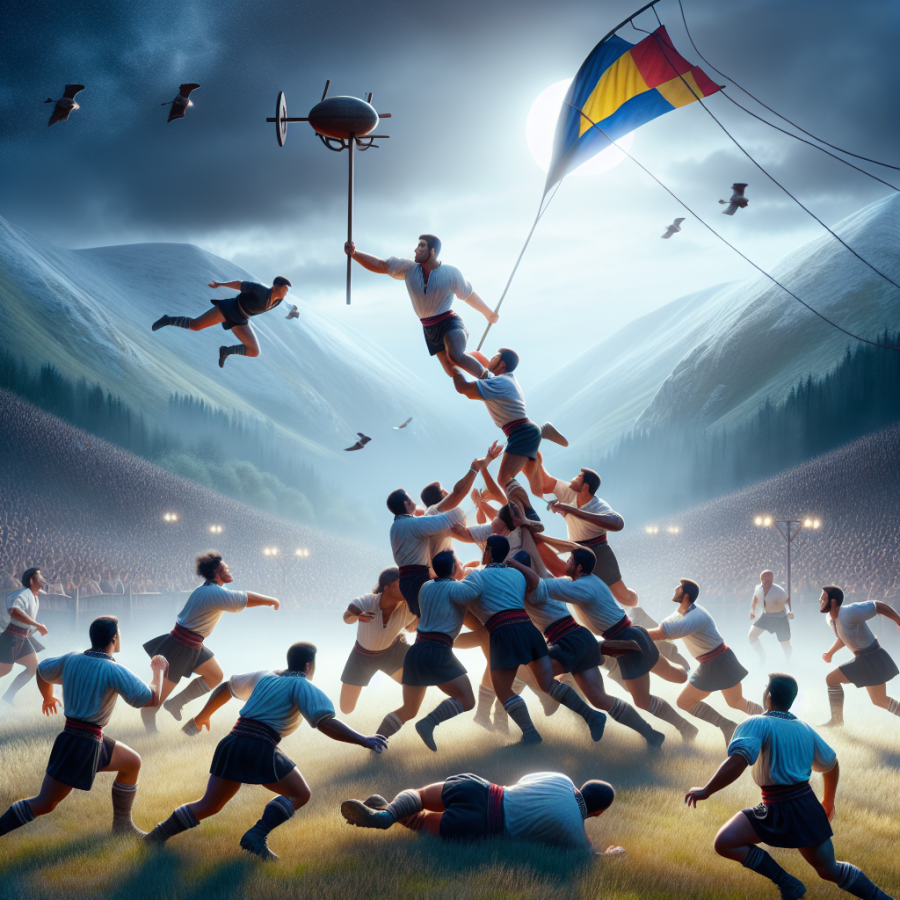The Cultural Significance of Oină in Romanian Society
Oină is a traditional Romanian sport that has played a significant role in the cultural fabric of the country for centuries. Though not as internationally known as other sports, oină is a treasured part of Romania's national heritage and has been a vehicle for promoting cultural identity, unity, and pride among its people.
Rooted deeply in history, oină was first mentioned in historical documents dating back to the 14th century. It is believed that the game originated with the Dacians, the ancestors of modern Romanians, and it has been passed down through generations as a pastime that celebrates agility, strength, and teamwork. It was traditionally played by shepherds and villagers, serving not only as a form of entertainment but also as a means of physical training and the reinforcement of community bonds.
Over the years, oină has been more than just a game; it has been a reflection of Romanian society and values. The sport embodies key aspects of Romanian culture, such as the emphasis on physical skill and strategic thinking, the importance of communal activity, and the deep respect for tradition. As a community-centric game, oină has historically brought together people of different ages and social statuses, reflecting the inclusive nature of Romanian society.
The game has also served as a symbol of national identity, especially during periods of foreign rule and political upheaval. During such times, oină was a way for Romanians to quietly celebrate their cultural uniqueness and to preserve their customs and language. Playing the sport was an act of resistance, a subtle but powerful statement of the endurance and resilience of Romanian culture.
On a more contemporary note, although oinā's popularity has faced challenges from more modern and globally recognized sports like football (soccer) and tennis, there has been a renewed interest in promoting and preserving this traditional sport. Efforts have been made to teach oină in schools and to celebrate it through national championships and cultural festivals. This revival serves to connect younger generations to their heritage and to continue the legacy of oinā as an integral part of Romanian life.
Moreover, oină's presence in Romania extends into the educational system, where the sport is sometimes integrated into physical education programs. This not only provides students with an opportunity to learn about and participate in a historically significant aspect of their culture but also reinforces physical development and the value of teamwork.
Read also:
Understanding the Weight: A Comprehensive Guide to How Much Golf Carts Weigh
The Origins and Rules of Oină: Delving into Romania's Pastime
Oină is a traditional Romanian sport, similar in some aspects to baseball and rounders, and it is deeply rooted in the country's history and culture. Historically, the game dates back to at least the 14th century and it is believed to have been played by shepherds and rural communities as a form of leisure. Some historical records suggest that even the legendary Romanian ruler Vlad Țepeș (Vlad the Impaler) played oină during his time. The name "oină" was officially documented for the first time in the 19th century by Romanian educator and scholar Alecu Russo. It was recognized as a sport during the reign of Carol I, and it has been considered the national sport of Romania ever since.
The rules of oină are designed to allow a fluid and dynamic game that emphasizes both individual skill and team strategy. The game is played on a rectangular field with dimensions typically around 70 by 32 meters, though these can vary. Each team alternates between batting and fielding, with the aim of the batting team to hit the ball and then run to score points by touching a series of markers. It is vital for the running player to touch a marker before a fielder can return the ball to that marker's location; otherwise, the runner is disqualified.
There are two main types of players on the batting team: the "bătaie" (batters) and the "goană" (runners). The bătaie use a wooden bat to hit the ball and try to advance the runners around the field to score points. The runners, on their turn, demonstrate speed and agility to complete the circuit of markers before the ball is caught or returned. Fielders, or "apărători," have the task of catching the ball and stopping the batting team from scoring by returning the ball to the markers. Each team consists of 11 players and the game unfolds over nine innings, called "mânse," with each team exchanging roles of batting and fielding.
An important aspect of the game is the "lovitura de start" or the starting hit. A player from the fielding team throws the ball towards the batting team's designated hitter, who must then hit the ball into play. The game's pace picks up quickly as fielders scramble to recover the ball and runners dash to cover the bases.




